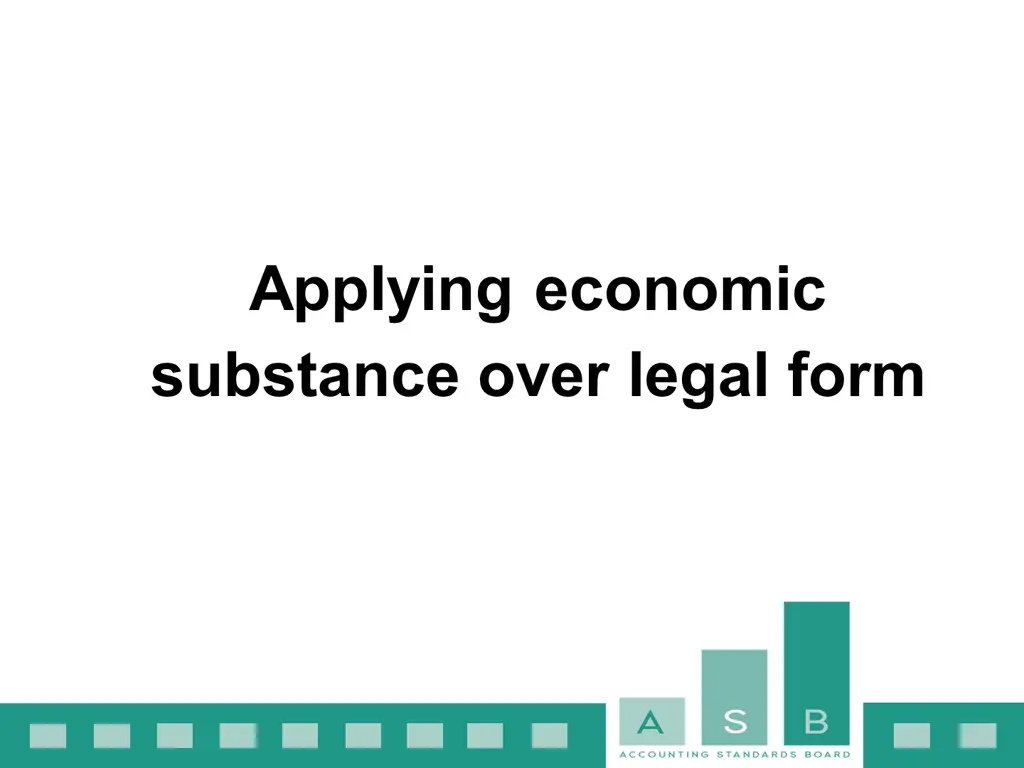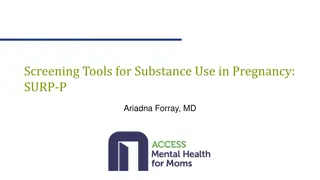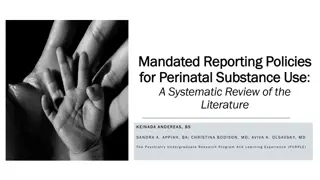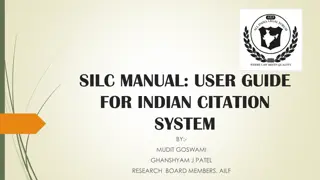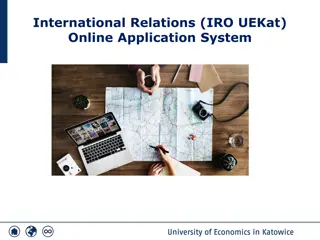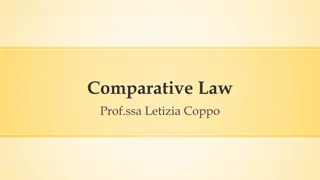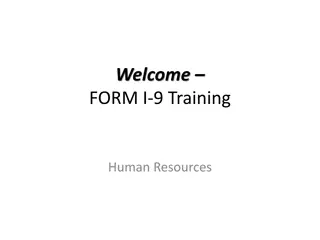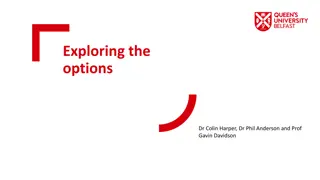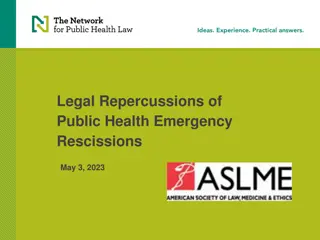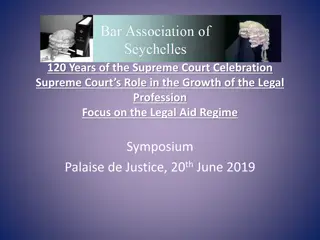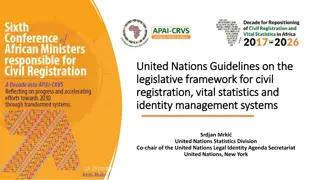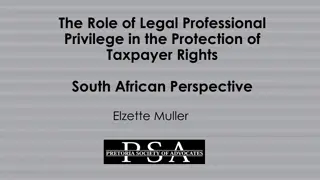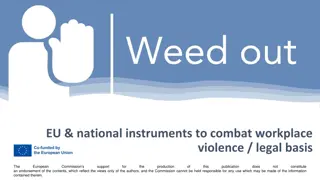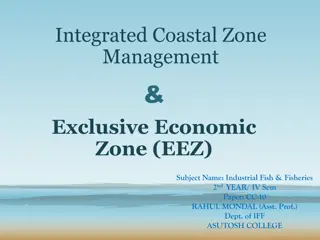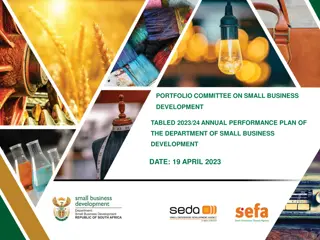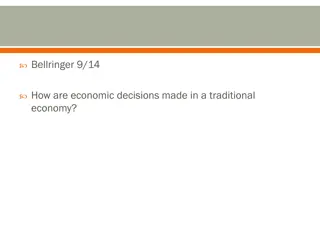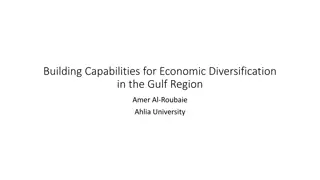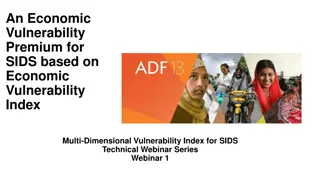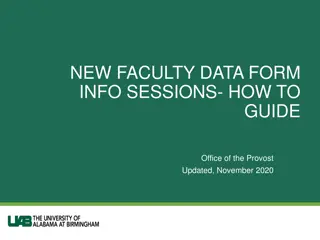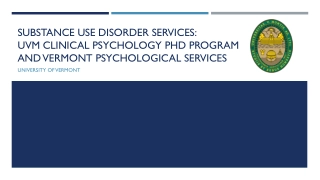Applying economic substance over legal form
Understand the concept of applying economic substance over legal form in financial reporting. Learn about its objective, faithful representation, and typical examples.
- economic substance
- legal form
- financial reporting
- objective
- faithful representation
- typical examples
- assets control
- liabilities
- preparers
Download Presentation

Please find below an Image/Link to download the presentation.
The content on the website is provided AS IS for your information and personal use only. It may not be sold, licensed, or shared on other websites without obtaining consent from the author. Download presentation by click this link. If you encounter any issues during the download, it is possible that the publisher has removed the file from their server.
E N D
Presentation Transcript
Applying economic substance over legal form
Disclaimer The views and opinions expressed in this presentation are those of the individual. Official positions of the ASB on accounting matters are determined only after extensive due process and deliberation.
What does applying substance over form mean? Applying substance over form is linked to the objective of financial reporting. Objective of financial reporting is to provide users of the financial statements to: - Hold entities accountable. - Make financial and other economic decisions.
What does applying substance over form mean? Users need information about economic or other phenomena. Information should be relevant, a faithful representation, timely, verifiable, comparable and understandable. Faithful representation means information should complete, neutral and free from error.
What does applying substance over form mean? Faithful representation means that the information in the financial statements appropriately reflects the economic or other phenomena underlying transactions. Financial statements are prepared using Standards of GRAP and not a legislative framework.
What does applying substance over form mean? As a result, entities account for transactions or other events using economic substance and not only legal form .
What are typical examples? Area Substance over form Assets Control of economic benefits and service potential, not legal title/ownership. Equity and liabilities Puttable instruments . Preference shares. Liabilities Advances to other entities that are not repayable. Classification of arrangements Principal-agent arrangements. Control relationships.
What are we doing in practice? Preparers not applying substance over form why not? - Knowledge of the concept. - Applying judgement is difficult. - Idea that legislation/contracts need to be the same as accounting outcome. - Court ruling.
Way forward? ASB staff will work to raise awareness of the concept and related issues over next quarter. Be mindful when preparing financial statements.
The effect of past decisions on materiality
Background Guideline on The Application of Materiality to Financial Statements issued in 2018. Respondents to draft commented on past practices in applying materiality. Historically required to keep record where alternative accounting treatments applied. View that needed to assess if effect could become material over time.
Background Board agreed to review GRAP 3 as a separate project + identify if guidance needed. Based on review, agreed to issue Interpretation.
Problem statement GRAP 3 on Accounting Policies, Changes in Accounting Estimates and Errors used to develop accounting policies. Accounting policies in the Standards of GRAP should be applied, except when the effect of applying them is immaterial.
Problem statement This means that entities can apply alternative accounting treatments to the recognition and measurement of items. Some typical examples
Problem statement Expensing of immaterial items that meet the definition of an asset. E.g. expensing low value assets that meet the definition of PPE. Expensing transaction costs that are immaterial to an asset. E.g. transactions costs incurred to originate financial instruments measured at amortised cost.
Problem statement Classifying assets differently even though they meet the definition of certain types of assets. E.g. immaterial heritage assets accounted for as PPE, servitudes recognised as part of PPE rather than intangible assets.
Problem statement Entities applied alternative accounting treatments in the past + were required to keep record of transactions/items. View that needed to assess if effect of applying these treatments became material over time. If yes, retrospective adjustments required.
Principles of IGRAP 21 The Effect of Past Decisions on Materiality
Scope of IGRAP 21 Deals with the application of materiality for recognition and measurement. Materiality + application to presentation and disclosure dealt with in GRAP 1 on Presentation of Financial Statements.
Two key issues addressed in IGRAP 21 #1 Do past decisions about materiality affect future reporting periods? #2 Is applying an alternative accounting treatment an error, or a departure from the Standards of GRAP?
Issue #1 Do past decisions about materiality affect future reporting periods?
Do past decisions affect future reporting periods? Materiality is assessed during a reporting period and at reporting date. Decisions about, and assessments of, materiality are period specific. No effect on future periods unless an errors occurred.
Do past decisions affect future reporting periods? To answer question raised Retrospective changes only made when (a) change in accounting policy, or (b) an error was made. Changing from an accounting treatment to a GRAP accounting policy is not a change in policy. Alternative treatments not errors, unless certain circumstance exist.
Do past decisions affect future reporting periods? To answer question raised Retrospective changes limited to situations when an error is made by an entity in assessing materiality.
Accounting treatments and accounting policies Entities can have: Alternative accounting treatments = immaterial items. Accounting policies based on Standards of GRAP = material items.
Accounting treatments and accounting policies Accounting treatments and accounting policies applied: Based on materiality during the reporting period and at reporting date. Using all relevant facts and circumstances at date materiality assessed. Applied consistently to similar items, transactions and events.
Accounting treatments and accounting policies Accounting treatments and accounting policies applied: Materiality determined quantitatively and qualitatively. Considering effect on individual items, as well as collectively. Assessment considers effect on both current as well as future reporting periods (based on available information.
Example 1 Metropolitan Municipality A applies materiality to decide which items of computer equipment should be recognised as assets in accordance with the Standard of GRAP on Property, Plant and Equipment (GRAP equipment comprises (a) computer peripherals such as printers, screens, keyboards; and (b) high value computer equipment such as tablets, laptops, and servers. Computer equipment is mainly used for administrative purposes. 17). Computer
Example 1 (contd.) The municipality considers the nature, and value of computer equipment both individually and collectively, in determining municipality determines that the effect of not capitalising computer peripherals in accordance with GRAP 17, even if considered collectively, is likely to have an immaterial effect on the financial statements both now and in the future. materiality. The
Example 1 (contd.) Based on this assessment, the municipality develops: Criteria identifying what is considered a computer peripheral based on the nature of the item using qualitative materiality. A quantitative materiality threshold which indicates that computer peripherals with an individual cost of less than R5 000 are immaterial and should be expensed in the year of purchase. An policy indicating that items that are either not computer peripherals and individual cost of more than R5 000, should be capitalised as assets in terms of GRAP 17. items that have an
Example 1 (contd.) Analysis In this scenario, the municipality acquires a range of similar items that are classified as computer equipment . This could result in individual items of computer equipment (the computer peripherals) with a value of less than R5 000 being expensed, and individual items of computer equipment with a value of more than R5 000 being capitalised. The alternative accounting treatment or accounting policy is applied consistently to all similar items in the same category of assets. The accounting will however depend on the materiality of each individual item.
Example 1 (contd.) The municipality would have both an accounting policy and an alternative accounting treatment and apply these based on materiality. This would be applicable to both the current and subsequent reporting periods. The municipality would need to determine the threshold at a low enough level to ensure that the effect of the cumulative expensing of individual items in the current and future reporting periods will not have a material effect on the financial statements either in part or when taken as a whole.
Example 2 College A develops a materiality threshold for the acquisition of computer equipment. Computer equipment comprises (a) computer peripherals such as printers, screens, keyboards, and external cameras and microphones; and (b) other computer equipment such as desktop computers, laptops, servers, and 3D printers. The College mainly offers IT related qualifications and most computer equipment acquired is used by students in its computer labs.
Example 2 (contd.) Given the volume and use of the computer equipment by students, computer equipment is an integral part of the College s infrastructure and service delivery. The College determines that while the value of individual items of computer equipment including some computer peripherals - are immaterial, the collective (aggregate) value of all computer equipment is material. As a result, the College decides that all computer equipment should be recognised in accordance with GRAP 17 because of its collective materiality.
Issue #2 Are alternative accounting treatments errors or departures?
Can accounting treatments be errors or departures? GRAP 3 allows entities to not apply the Standards to immaterial items. As a result, applying alternative treatments is not a departure and not an error. Errors arise when
Errors can arise 1. Immaterial items are omitted from the financial statements. 2. Inappropriate accounting treatment applied because of a failure to use, or misuse of, reliable information that was available or could reasonably have been expected to be used.
Errors can arise 3. Alternative accounting treatment is applied to achieve a particular presentation in the financial statements. 4. An incorrect assessment of materiality is made resulting in material transactions accounted for as immaterial transactions. GRAP 3 applies to errors.
Example 3 Using the same facts as in Example 1. Background Year 1 The total value of computer peripherals acquired during the year with an individual cost of less than R5 000 amounted to R100 000 and was recognised as an expense. The total value of computer peripherals and other computer equipment acquired with an individual value of more than R5 000 amounted to R4 million and was recognised as property, plant and equipment.
Example 3 (contd.) Year 2 The municipality establishes a major, high-tech call centre to respond to service delivery, finance and other related queries from the public. This results in a significant investment in new computer equipment of all types (both computer peripherals and other computer equipment). The establishment of the call centre means that the municipality needs to reconsider its assessment of materiality for computer equipment.
Example 3 (contd.) Year 2 Given the nature and volume of computer equipment acquired during the year, as well as expected purchases in subsequent reporting periods, the municipality revises its criteria and materiality threshold to indicate that only certain items of computer equipment with a value of R3 000 or less can be expensed. The result is that some items that either by their nature or value were considered computer peripherals and expensed in prior years, would now be recognised as assets in accordance with GRAP 17.
Example 3 (contd.) Analysis Based on the fact pattern, there is a change in the both the qualitative criteria as well as the quantitative materiality threshold from year 1 to year 2. Materiality is assessed during a reporting period and at the reporting date based on facts and circumstances on the date of assessment. The municipality s determination of materiality in year 1 was appropriate based on the information available and activities undertaken as that time. As a result, the municipality will not make any adjustments in year 2 for the computer equipment that was expensed in year 1 as a result of the change in materiality for the same items in year 2 if they were to be acquired under the revised materiality threshold.
First time application of IGRAP 21
Transitional provisions Assessments of materiality are period specific and require judgement. Difficult to assess whether materiality correctly assessed in the past. Transitional provisions = prospective + no need to assess past decisions.
Some practical issues to consider
Practical issues to consider Alternative accounting treatments not based on accounting policies for specific transactions in Standards. Developed so that not inconsistent with the Conceptual Framework.
Practical issues to consider Guideline identifies a process to assess and apply materiality. Document materiality considerations and discuss with management and oversight structures. Emphasise importance of clearly documenting considerations. Consider all available information + consider effect on future periods.
